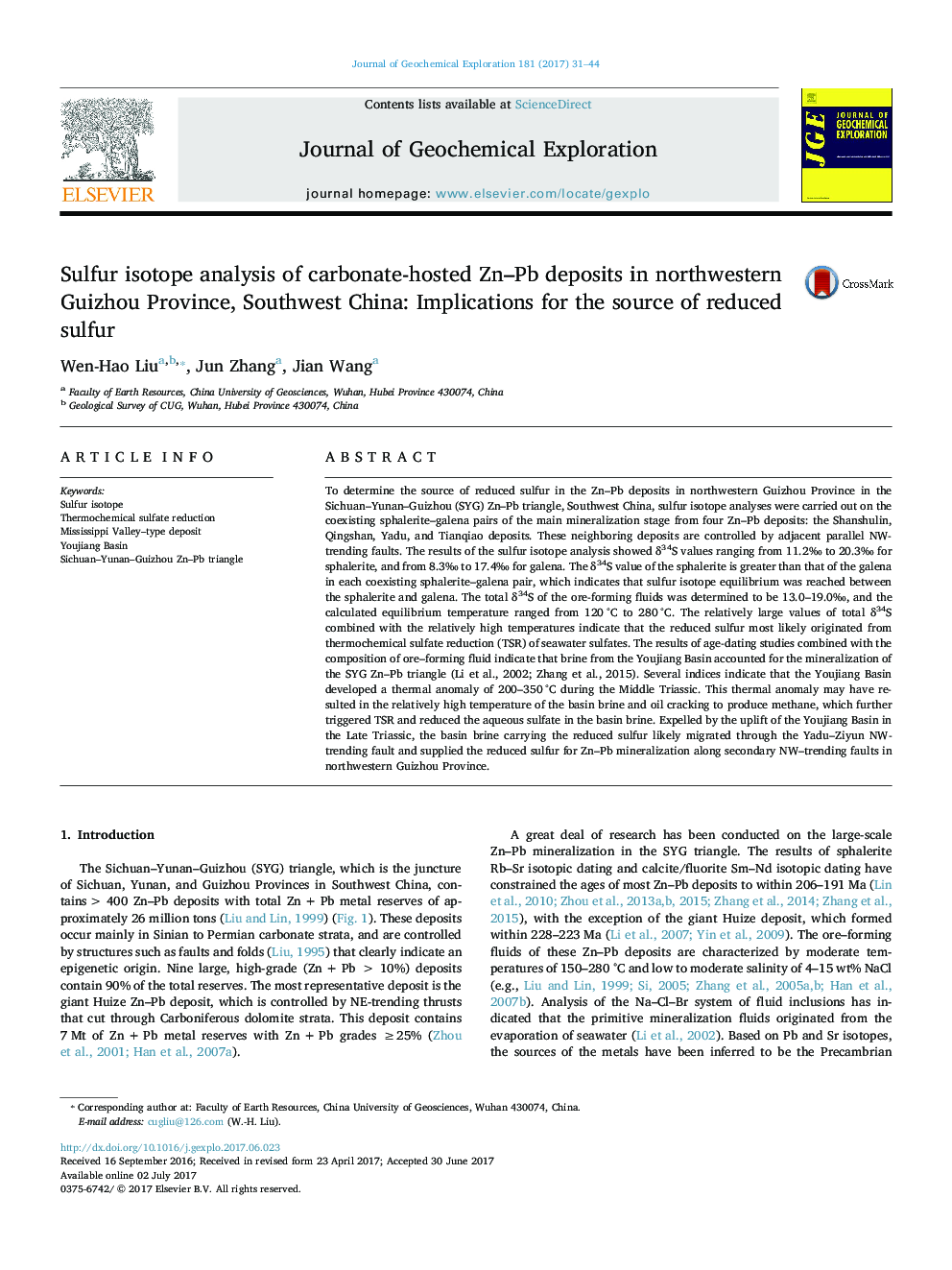| کد مقاله | کد نشریه | سال انتشار | مقاله انگلیسی | نسخه تمام متن |
|---|---|---|---|---|
| 5754524 | 1620878 | 2017 | 14 صفحه PDF | دانلود رایگان |
عنوان انگلیسی مقاله ISI
Sulfur isotope analysis of carbonate-hosted Zn-Pb deposits in northwestern Guizhou Province, Southwest China: Implications for the source of reduced sulfur
دانلود مقاله + سفارش ترجمه
دانلود مقاله ISI انگلیسی
رایگان برای ایرانیان
کلمات کلیدی
موضوعات مرتبط
مهندسی و علوم پایه
علوم زمین و سیارات
زمین شناسی اقتصادی
پیش نمایش صفحه اول مقاله

چکیده انگلیسی
To determine the source of reduced sulfur in the Zn-Pb deposits in northwestern Guizhou Province in the Sichuan-Yunan-Guizhou (SYG) Zn-Pb triangle, Southwest China, sulfur isotope analyses were carried out on the coexisting sphalerite-galena pairs of the main mineralization stage from four Zn-Pb deposits: the Shanshulin, Qingshan, Yadu, and Tianqiao deposits. These neighboring deposits are controlled by adjacent parallel NW-trending faults. The results of the sulfur isotope analysis showed δ34S values ranging from 11.2â° to 20.3â° for sphalerite, and from 8.3â° to 17.4â° for galena. The δ34S value of the sphalerite is greater than that of the galena in each coexisting sphalerite-galena pair, which indicates that sulfur isotope equilibrium was reached between the sphalerite and galena. The total δ34S of the ore-forming fluids was determined to be 13.0-19.0â°, and the calculated equilibrium temperature ranged from 120 °C to 280 °C. The relatively large values of total δ34S combined with the relatively high temperatures indicate that the reduced sulfur most likely originated from thermochemical sulfate reduction (TSR) of seawater sulfates. The results of age-dating studies combined with the composition of ore-forming fluid indicate that brine from the Youjiang Basin accounted for the mineralization of the SYG Zn-Pb triangle (Li et al., 2002; Zhang et al., 2015). Several indices indicate that the Youjiang Basin developed a thermal anomaly of 200-350 °C during the Middle Triassic. This thermal anomaly may have resulted in the relatively high temperature of the basin brine and oil cracking to produce methane, which further triggered TSR and reduced the aqueous sulfate in the basin brine. Expelled by the uplift of the Youjiang Basin in the Late Triassic, the basin brine carrying the reduced sulfur likely migrated through the Yadu-Ziyun NW-trending fault and supplied the reduced sulfur for Zn-Pb mineralization along secondary NW-trending faults in northwestern Guizhou Province.
ناشر
Database: Elsevier - ScienceDirect (ساینس دایرکت)
Journal: Journal of Geochemical Exploration - Volume 181, October 2017, Pages 31-44
Journal: Journal of Geochemical Exploration - Volume 181, October 2017, Pages 31-44
نویسندگان
Wen-Hao Liu, Jun Zhang, Jian Wang,